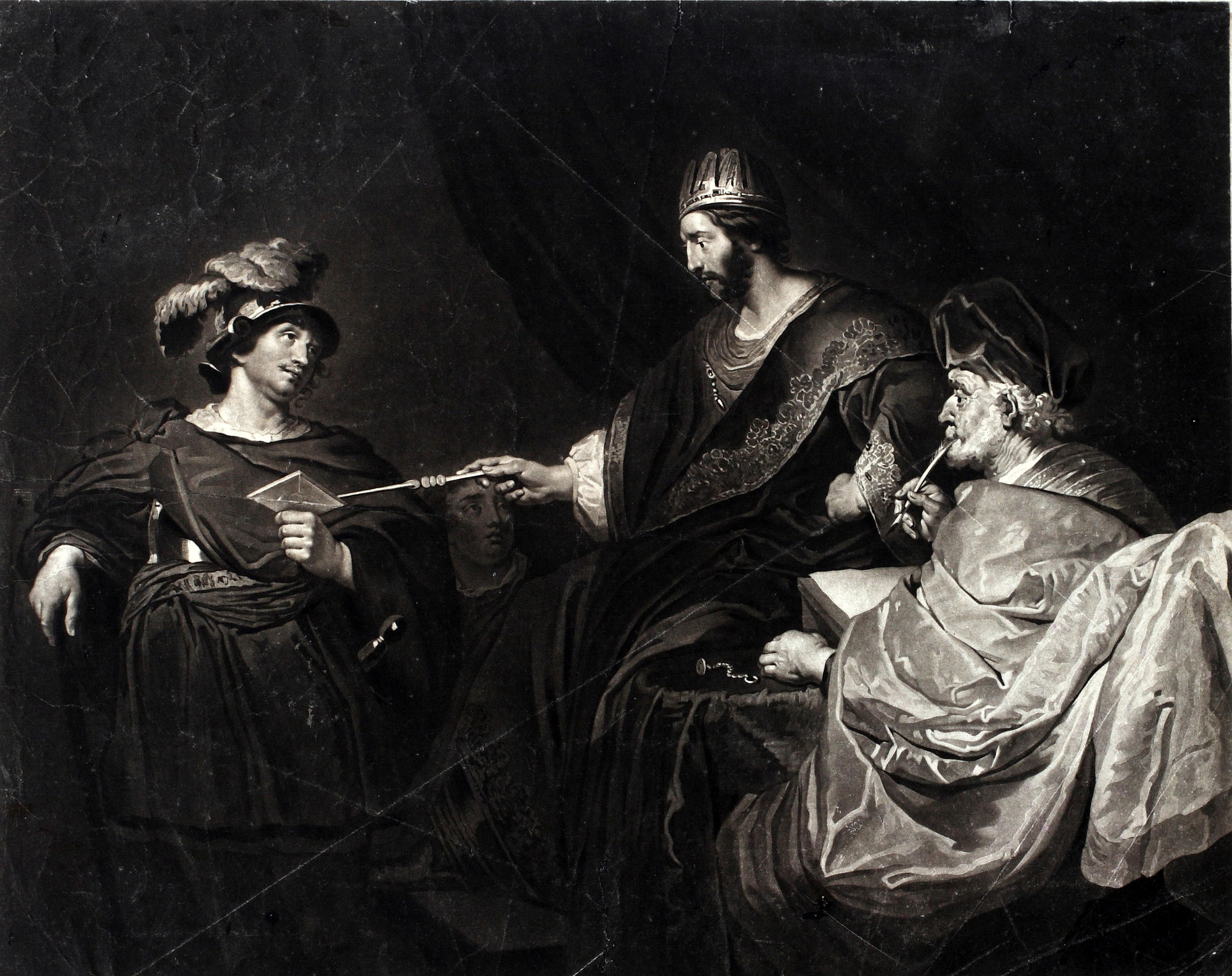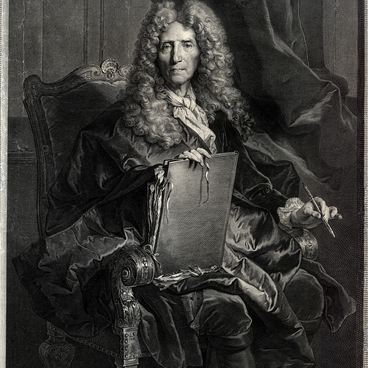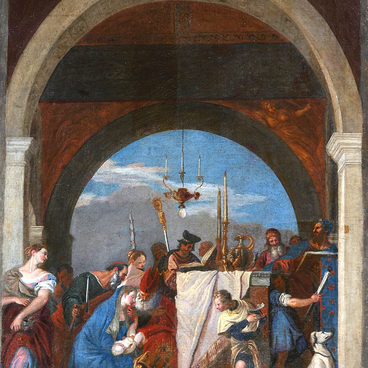The engraving by William Ward depicts the characters of the Old Testament. One day, David was walking on the roof of his palace. He looked down and saw the bathing Bathsheba, the wife of the brave warrior Uriah the Hittite, who was at this time far away, fighting at the war with the Ammonites. The king looked and the woman and coveted her. The king ordered the servants to bring the woman to him, committed the sin, and then sent her home. When Bathsheba became pregnant, David tried to hide the adultery. He summoned Uriah from the war, judging that the husband, who had not seen his wife for a long time, would wish to lie down with her, and the sin would go unnoticed. But Uriah refused to enter the house: ‘The Ark of the Lord and Israel and Judas are in tents, and my lord Joab and the servants of my lord are in the field, so would I enter my house and eat, and drink, and sleep with my wife!? By your life and by the life of your soul, I shall not do this.’
David sent the warrior back, with a letter to Commander Joab, in which he ordered: ‘Put Uriah in the place of the fiercest battle and step back from him, so that he will be slain and die’. Uriah was killed, and David took Bathsheba as his wife. A few months later, she gave birth to a son, Solomon.
David sent the warrior back, with a letter to Commander Joab, in which he ordered: ‘Put Uriah in the place of the fiercest battle and step back from him, so that he will be slain and die’. Uriah was killed, and David took Bathsheba as his wife. A few months later, she gave birth to a son, Solomon.


